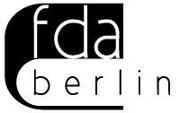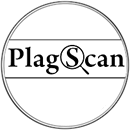Research Proposal
Research Proposal
Suggested Topic: Long combination vehicles in Germany – Concepts in marketing and sales planning of transport services provider
Several studies conducted within the last few years stated that the volume of freight haulage in Germany (and Europe) will drastically increase within the next twenty to fifty years. According to progtrans the amount of tonne kilometres transported in Germany will increase by 39% until 2025 [1]. Different independent studies support the projected increase in freight haulage volume.
Within this increase in tonne kilometres road haulage will play an important role. Today 71% of tonne kilometres drop down to road haulage [2] and progtrans forecasted a slightly over proportional increase of this share.
Since all modes of transport (rail, air, sea and road) are operating almost at their limits, the demand for innovative freight transportation concepts will rise. The road as the main mode of transport and also the most flexible deserves special attention.
Investments in infrastructure are expected not to keep pace with the increase in freight transport volume. So new innovative commercial vehicle concepts need to offer more loading capacity compared to the street space they consume.
Another important aspect to consider in freight haulage is environmental friendliness. While freight transport volume increases emissions have to decline. So, future modes of transportation have to be environmental friendly.
One of many concepts for solving the future capacity problem are long combination vehicles (LCV).
These trucks are up to 25,25 m long (instead of 18,75 m) and are allowed to have a gross weight of 40 tones, 44 tones for intermodal transport respectively. Since the beginning of this year Germany issued an exemption provision allowing these vehicles on selected roads and highways in the context of a long-run field test. Companies have to register at the Federeal Road Research Institute in order to operate long combination vehicles.
Many countries worldwide use to run LCV’s in all possible dimensions, but since the EU restricted gross weight and dimensions of trucks; they are uncommon with the European Union. Only some countries previously completed field tests, like e.g. Netherlands or Denmark. In Sweden LCV’s are allowed in even longer versions and with higher gross weight.
Several studies focused on the effects on roads, bridges and the infrastructure in general in the countries which completed field tests, but the results cannot be 100% assigned to German preconditions. That is why also well-respected institutions conducted research and published studies on this topic in Germany. According to the clients the results were different and not based on any practical experience but only on theoretical considerations.
The field test will also be scientifically accompanied by the Federal Road Research Institute.
As much research there is on infrastructural aspects and emission, the less is on the impact these trucks have on the marketing and sales activities of transport services providers.
That is the knowledge gap my research will try to close. As transport services providers will be offered new proxies to provide their service, an impact on their marketing and sales activities is likely to occur.
Currently a vital debate is running whether long combination should ever roll on German streets. The arguments of critics and supporter of LCV’s should also find a place in the study as well as the outcomes of different studies conducted on the impact of these trucks on roads and bridges and the maneuverability respectively.
Furthermore due to the regulation posed by the German government it needs to be examined what fields of operation are suitable for these vehicles? Literature deals with the questions of suitable fields of operations, but since regulations create special cases for each country, the German case is not yet examined.
The aim of my research is to identify relevant aspects of marketing and sales planning of transport services provider which are using long combination vehicles.
To achieve this aim the following objectives should serve as a guideline for my research:
Identify the market structure for freight transport in Germany and to compare the different modes of transportation
Analyze the competitive situation inter-modal and intra-modal
Discuss and evaluate the specific problems of long combination vehicles in Germany
Identify relevant fields of operation
Point out the specifics of marketing and sales in the logistics industry
Determine the relevant aspects in the marketing and sales planning taking the use of LCV’s into account
Find ways to communicate this concept
It should be noted that in the current phase of my research these guidelines are not final.
According to the objectives and the aim of my research the following research questions should guide my study.
Did the use of long combination vehicles uncover any problems with the German infrastructure regarding maneuverability, wearout road safety?
In what fields of operation do transport services provider use long combination vehicles and what goods do they transport?
Can users of long combination vehicles achieve cost advantages by using long combination vehicles?
How do long combination vehicles influence the image of the respective company?
What (competitive) advantages (if any) can long combination vehicles add to transport services providers marketing mix?
How should transport services provider adapt their marketing and sales planning to long combination vehicles?
The answers to these questions are not covered by any of the existing studies on the German field test. The results of this research can consequently result in new insights for transport services providers and also for scientists accompanying this field test. The feedback from expert interviews already conducted support this assumption.
Literature Review
Mobility of goods is an important aspect for the prosperity of a national economy. Mobility is correlated with the economic performance of a region. The mobility of goods is an important prerequisite for the efficient production of goods produced based on the division of labor. Consequently the aim of economic growth goes together with the demand for mobility Daduna, 2009).
Button arranged an aggregated list of studies from the last 40 years and surveyed their findings regarding the connection between transport and economic development. The findings are limited to changes in road infrastructure to different extents in the UK and US. The results are inconclusive, some studies identified small to medium effects on employment and economic growth, on the other hand the majority of studies could not identify effects on economy or employment or the findings were ambiguous. One study of Wilson et. Al. (1982) even found that transport only affected the location decision, but not the development. All in all, no evidence for an effect of transport infrastructure investments on economic development could be found (Button 2010).
Freight transport is thus an important indicator for the level and structure of a national economy. The level on transnational trade relationships, the geographic split of a national economy as well as the quality and quantity of the infrastructure are some of the elements that directly affect the amount of freight transported. In turn the more goods are transported the more output a national economy has produced (Aberle, 2009).
Freight transportation is again subdivided into the following modes of transportation:
Air freight transport
Inland waterway transport
Rail freight transport
Transport by networks & Pipeline
Road freight transport
The different modes have different importance for the economy in terms of transport performance (transported quantity x kilometers). Air freight transport and transport by networks and pipelines have a very small share of transport performance and the most important modes are:
1. Road freight transport (73,2% share of transport performance)
2. Rail freight transport (18% share of transport performance)
3. Inland waterway transport (8,8% share of transport performance)
(Bundesamt für Güterverkehr, 2011)
Several studies recently conducted project a steady growth for the freight transport industry. Within the industry the major growth can be found in road freight transport. A forecast of freight transport in 2025 projects that freight transport will grow by 39% (in terms of tonnekilometers). The estimated growth of the road freight transport sector will be more than 100 billion tonnekilometers , whereas rail transportation will only grow by 50 billion tonnekilometers (Stephan Kritzinger, Progtrans AG Basel, 2011).
Another study forecasted that approx 75% of freight transport will take place on the street in 2050 (Progtrans AG , 2007).
This proves the significance of road freight transport within the freight transport market. It is obvious that technology improvements are necessary to match both the pressure to reduce emissions and to handle the increased volume of transport goods.
In contrast to the increasing amount of freight is the development of the infrastructure. There are no reliable forecasts for investments in infrastructure within the next years, but it can be derived from actual investments that the increase of traffic area cannot keep up with the increase in freight volume (Albers, 2009).
One way to deal with significantly higher freight volume is to increase the maximum dimensions of trucks. Therefore the Bundesregierung initiated a field test for long combination vehicles on selected highways and roads in Germany. The field test allows trucks to measure 25,5 m in lengths instead of 18,75 m. The maximum gross weight remains at 40 tones or 44 tones in combined freight transport. Transport service provider need to register in order to participate in the field test (Bundesministerium für Verkehr; Bau und Stadtentwicklung, 2011).
Since the beginning of the field test, different lobbies took different positions towards long combination vehicles. Just after the announcement of the field test parties, such as the ADAC or “Allianz pro Schiene” began to fight long combination vehicles. Their main arguments are:
Road safety considerations: LCV’s have longer breaking distances than regular trucks and passenger car drivers underestimate the length of the LCV when overtaking
Street wear out: LCV’s result in higher street wear out
Substitution effects: LCV’s take more freight volume from the rail to the street
Maneuverability: LCV’s have problems in city traffic situations (e.g. rotary traffic) (Allianz Pro Schiene, 2011) (ADAC, 2012)
In fact this is a one-sided view which is much undifferentiated. Two independent Studies of BAST (Federeal Road Research Institute) prove that LCV can pass all the road regular trucks can pass. Besides several freight forwarders testify that from their practical experience (Böcking, Unbekannt) (Voigt, 2012).
Furthermore the other points critics mention can be disproved by simple calculations and facts. A LCV has the same gross weight as regular trucks, but allocated on more axes which reduces the weight – and thus street pressure – per axel. So, there cannot be higher wear out (Thomas Schwarz, 2012).
The substitution effect of LCV’s for rail transportation cannot be defined at the current stage of the field test. This will be part of further research for this thesis.
Data Collection
The data collection for the thesis will be executed by a qualitative data collection method.
The method of choice is interviews with selected experts on the specific problems addressed in the thesis.
The research topic is very close to reality since it deals with a newly introduced field test. LCV’s are running in other countries, but the specific problem is focused on the German market. The research area implies that a certain amount of forecasting and prediction is needed. In addition specific cases of users need to be addressed. The problem cannot be answered by standardized questions.
Furthermore the topic is related to a specific business sector in a B2B context. Freight transportation or forwarding is not a topic the general public is interested in or has the relevant amount of knowledge to provide insides for a proper solution to the research problems.
In order to deal with the research topic specific knowledge is needed to answer specific questions related to the industry and the economic background.
In order to address both requirements a data collection method was needed, that is adjustable, steerable and suits a small sample with very specific knowledge. Qualitative interviews suit both of the requirements.
In particular the semi-structured interview is a proper method of data collection.
For getting optimal results an interview guideline is needed. It addresses all the problems to be solved and maintains a certain level of standardization which guarantees comparability.
Nevertheless, the semi-structured interview allows for spontaneous adaption of questions and directions during the interview.
For the preparation of the interview guideline the following principles for qualitative interviews have been followed:
Open questions which do not suggest any direction of answering
Same general structure of the guideline for each interviewee
General formulation of questions which does not imply any opinion of the interviewer
All the interviews have been recorded in order to guarantee a proper transcription
Since the background of the experts was always different adaption of the guideline for the single cases was necessary.
The interviews were all structured in the following parts:
1. Personal Background
This should give some information about the background of the person and justify the selection of the person as an expert
2. Often discussed concerns regarding LCV’s
There are several issues that are basically always mentioned in one sentence with LCV’s. In an open non-directive manner the opinions of the experts were collected. The issues include:
i. Safety concerns
ii. Street wear concerns
iii. Accidents with an LCV in Germany
In this context the personal perception of the perceived image of LCV’s has been asked. Since the media used to report one-sided, the image question became of central importance. For marketing this is an important enabler for success.
The next section asked for experiences from the field test. In particular mentioned concerns were tested. Experts argued before the field test, that LCV will have manoeuvrability problems limiting their fields of use. Also the probability of substitution effects with other modes of transport was tested.
The next part dealt with cost. Costs can be the main differentiation aspect and create competitive advantage. Thus this is a key part of the interview.
Afterwards questions regarding usage and experience with customers were collected. From the experience with customers the value proposition can become clearer.
The last part was an evaluation part summing up the previous parts and asked for the expert’s opinion in particular.
It needs to be said, that a highly standardized data collection was not the goal. The sample size is too small to generate statistical evaluations. In fact the collected data should be the basis for a sound preparation of concepts for marketing and sales.
Yet 90% of the interviews are conducted, but not yet transcript. For the transcription all interviews will be copied then structured according to several sub-headlines and compared for conformity or unconformity of answers.
The results of this transcription will be used for the thesis.
In the end the results from the interviews are a tool to derive measures for marketing and sales which will be supported by literature or vice versa.
[1] Progtrans: „Mittel- und langfristige Entwicklung des Güterverkehrs in Europa – Prognose bis 2025“ , Müllheim, 1. Februar 2011
[2] Allianz pro Schiene 2011, http://www.allianz-pro-schiene.de/gueterverkehr/hintergrund-marktanteile/







 German
German
 English | Writeree.com
English | Writeree.com


